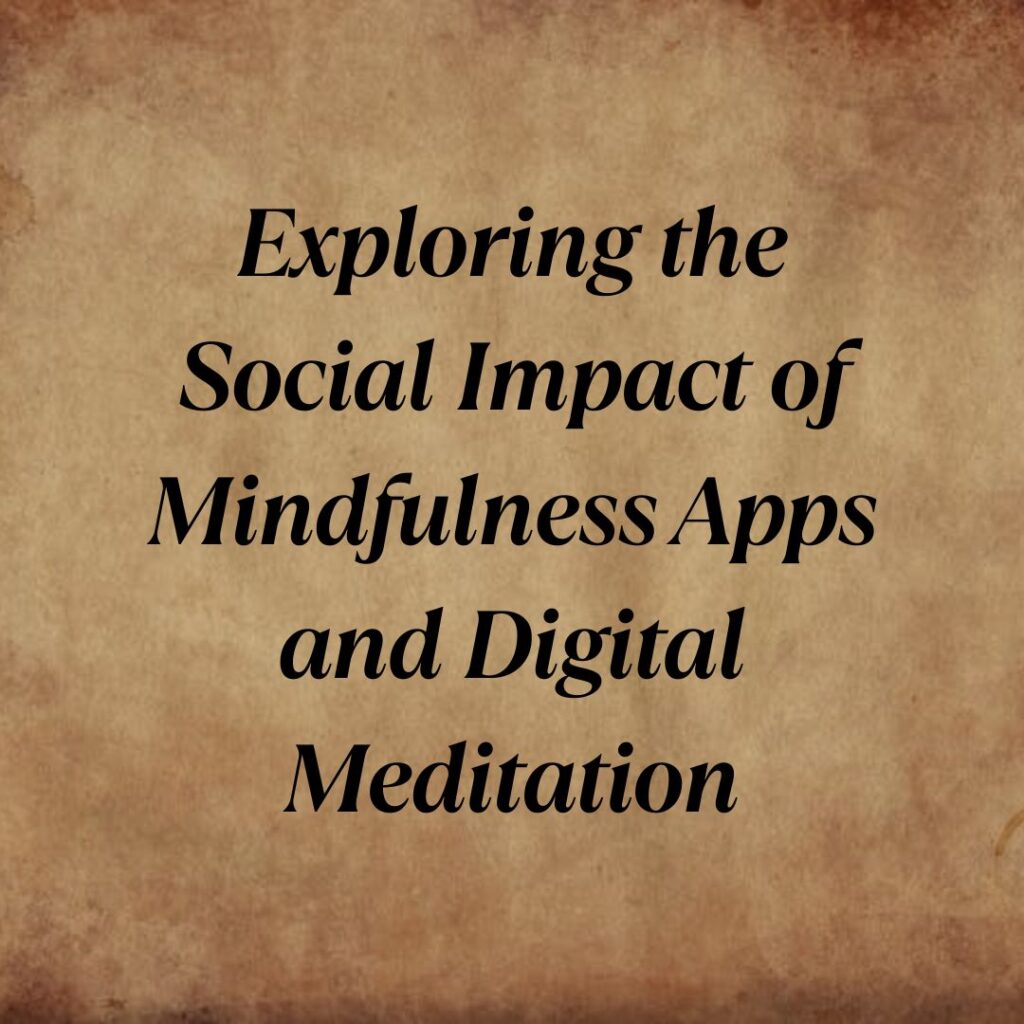In an increasingly fast-paced world where smartphones are practically extensions of our bodies, the rise of mindfulness apps and digital meditation platforms couldn’t have come at a more crucial time. These digital tools promise to bring peace, focus, and mental well-being right to our fingertips. But beyond the convenience, what exactly is their social impact? How are they reshaping our understanding of meditation and mindfulness practices?
The Rise of Mindfulness Apps: From Silicon Valley to Main Street
Mindfulness, once relegated to monks in serene monasteries, has now become a billion-dollar industry accessible to anyone with a smartphone. Apps like Headspace, Calm, and Insight Timer have amassed millions of users worldwide, democratizing practices that were once considered esoteric.
Accessibility and Inclusivity: One of the most profound impacts of these apps is their ability to make mindfulness practices accessible to diverse populations. Whether you’re a busy executive in New York or a student in Mumbai, these apps offer guided meditations, breathing exercises, and soothing sounds that cater to various needs and preferences.
Take Headspace, for example. Founded by Andy Puddicombe, a former Buddhist monk, and Richard Pierson, Headspace has grown into a global phenomenon. It offers themed sessions on stress reduction, sleep improvement, and even mindfulness for kids, making meditation a practical tool for everyday life.
Integration into Daily Routine: The integration of mindfulness into digital platforms has seamlessly blended ancient practices with modern technology. For many, these apps have become part of their daily routine, akin to brushing teeth or exercising. This integration underscores their effectiveness in addressing contemporary issues such as anxiety, stress, and burnout.
The Digital Meditation Landscape: Beyond Apps
Beyond standalone apps, digital meditation has permeated various aspects of our online existence:
Corporate Wellness Programs: Companies like Google, Apple, and General Mills have integrated mindfulness programs into their corporate culture. These initiatives aim to enhance employee well-being, reduce absenteeism, and boost productivity. Google, for instance, offers “Search Inside Yourself,” a mindfulness-based emotional intelligence program that has gained popularity beyond Silicon Valley.
Educational Institutions: Mindfulness has also found a place in classrooms. Schools worldwide are implementing programs that teach students techniques to manage stress and improve focus. In the UK, the Mindfulness in Schools Project offers curricula designed to enhance emotional resilience and academic performance.
Healthcare and Therapy: In the realm of healthcare, digital meditation is being prescribed as a complementary therapy for various conditions, including depression, chronic pain, and PTSD. Apps like Happify Health and Simple Habit partner with healthcare providers to deliver mindfulness interventions tailored to patients’ needs.
Critiques and Challenges: Navigating the Digital Mindfulness Landscape
Despite its benefits, the rise of digital mindfulness isn’t without its critiques:
Commodification of Mindfulness: Critics argue that turning mindfulness into a marketable product dilutes its spiritual essence. The monetization of meditation raises questions about accessibility and equity. Are these apps truly accessible to all socioeconomic groups, or do they cater primarily to affluent, tech-savvy users?
Ethical Concerns: There are also concerns about data privacy and the ethics of app design. Some platforms track user data to personalize experiences, which raises questions about consent and the unintended consequences of digital surveillance.
Skill vs. Experience: Another critique revolves around the distinction between learning mindfulness as a skill versus experiencing it as a profound inner journey. Can a digital interface truly replicate the transformative experiences traditionally associated with meditation retreats or face-to-face guidance?
Looking Ahead: The Future of Digital Mindfulness
As we navigate the evolving landscape of digital mindfulness, several trends and possibilities emerge:
Innovation and Personalization: Advances in artificial intelligence may lead to more personalized mindfulness experiences. Imagine an app that adapts in real-time to your emotional state or offers tailored meditations based on your unique preferences and goals.
Integration with Wearable Tech: Wearable devices, such as smartwatches and biosensors, could enhance mindfulness practices by providing real-time feedback on physiological responses like heart rate variability or skin conductance. These insights could deepen our understanding of meditation’s physiological impacts.
Cultural Adaptation: Mindfulness apps are increasingly tailored to different cultural contexts, acknowledging that practices vary across traditions. This cultural adaptation could make mindfulness more inclusive and relevant to diverse global audiences.
Conclusion
Mindfulness apps and digital meditation platforms represent a significant cultural shift, blending ancient wisdom with modern technology to address contemporary challenges. Their social impact spans from corporate boardrooms to classroom desks, offering tools for stress reduction, enhanced well-being, and personal growth.
As we continue to explore their potential, it’s essential to critically examine their implications for society. How can we ensure equitable access to these technologies? What ethical guidelines should govern their development and use? By asking these questions and remaining mindful of both the benefits and challenges, we can harness the transformative power of digital mindfulness for a healthier, more balanced world.
So, next time you reach for your smartphone to decompress with a meditation session, remember that you’re not just engaging in a personal practice—you’re contributing to a broader conversation about the intersection of technology and well-being in the 21st century.







